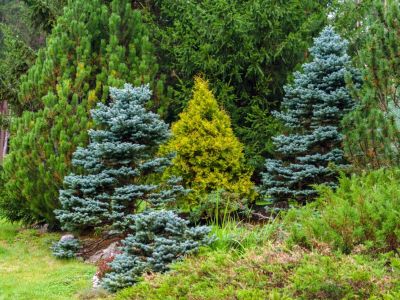What are Conifers?
Conifers are trees with sharp, needle-like foliage that remains on the branches year-round with only a few exceptions. Bald cypresses and larches are notable exceptions that drop their needles in winter. Conifers get their name from the cones which serve as reproductive structures. A few species have berry-like structures instead of cones. The female cones have ovaries on the individual scales which are pollinated by the windblown pollen from the male cone. The female cones mature into large, woody structures that drop to the ground in autumn. The male cones are quite small in comparison to the female structures and often go unnoticed.
Coniferous Plant Info
A conifer tree list includes:
Pine Spruce Cedar Fir Juniper Cypress Arborvitae
Within these groups you’ll find thousands of species and cultivars, each with its own characteristics. When choosing a conifer for your property, its best to consult with a local nurseryman. Choosing from a conifer tree list for your U.S. Department of Agriculture plant hardiness zone only tells you that the tree will withstand the minimum temperatures in your area. There is much more to consider when choosing a tree that will last for many years to come. We appreciate conifer tree types most in winter when their green foliage, sometimes tinged with blue, gold, and gray provide color just when we need it most. Some types also produce brightly colored winter berries. When planted in the right place, a conifer can protect homes and gardens from icy winter winds and drifting snow. A conifer’s dense foliage can also act as a screen, blocking out unsightly views and providing you with privacy. For the ultimate in privacy, choose types that have branches that extend all the way to the ground. The canopy of a conifer tree also provides year-round shade.
